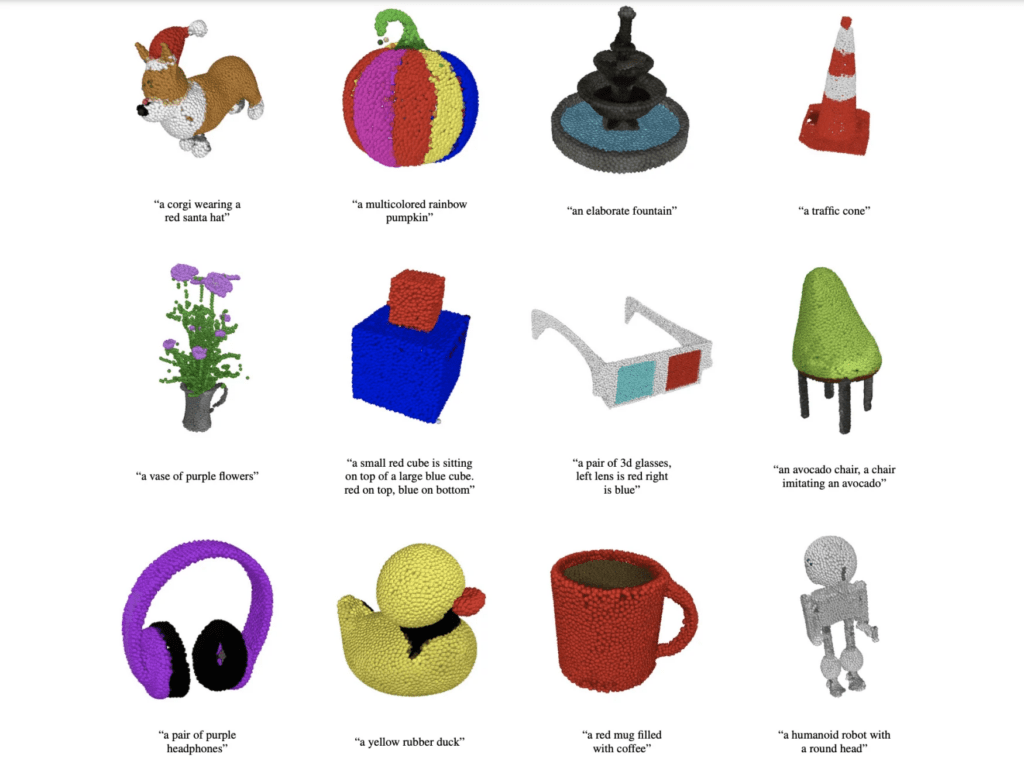
The next breakthrough to take the AI world by storm might be 3D model generators. Point-E, a machine learning system that generates a 3D object from a text prompt, was made available to the public this week by OpenAI. A paper that was published along with the code base claims that Point-E can create 3D models on a single Nvidia V100 GPU in one to two minutes.
In the conventional sense, Point-E does not produce 3D objects. Instead, it creates point clouds, which are discrete collections of data points in space that represent 3D shapes; hence, the playful abbreviation. From a computational perspective, point clouds are simpler to create, but they are currently a major drawback of Point-E because they cannot capture an object’s fine-grained shape or texture.


